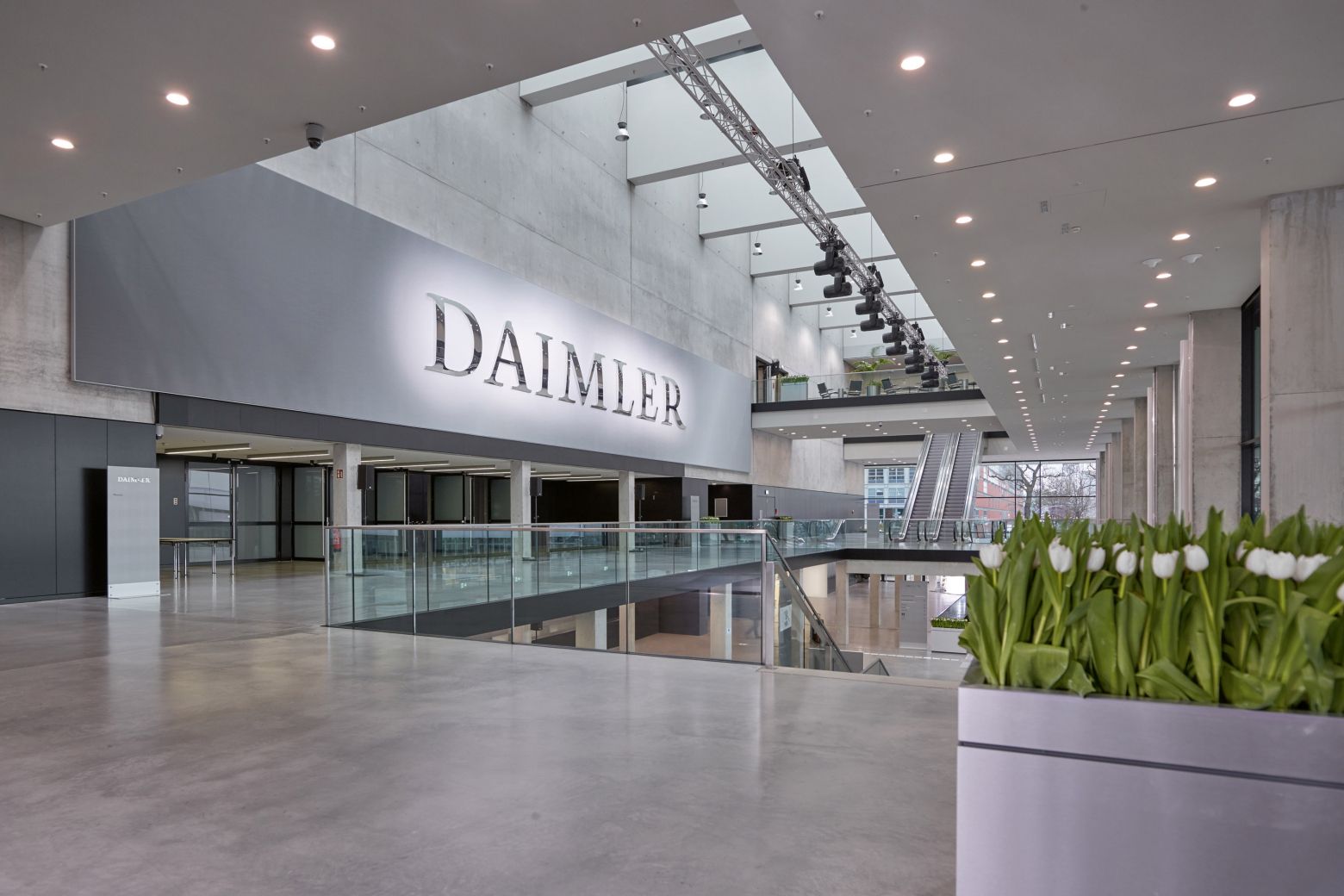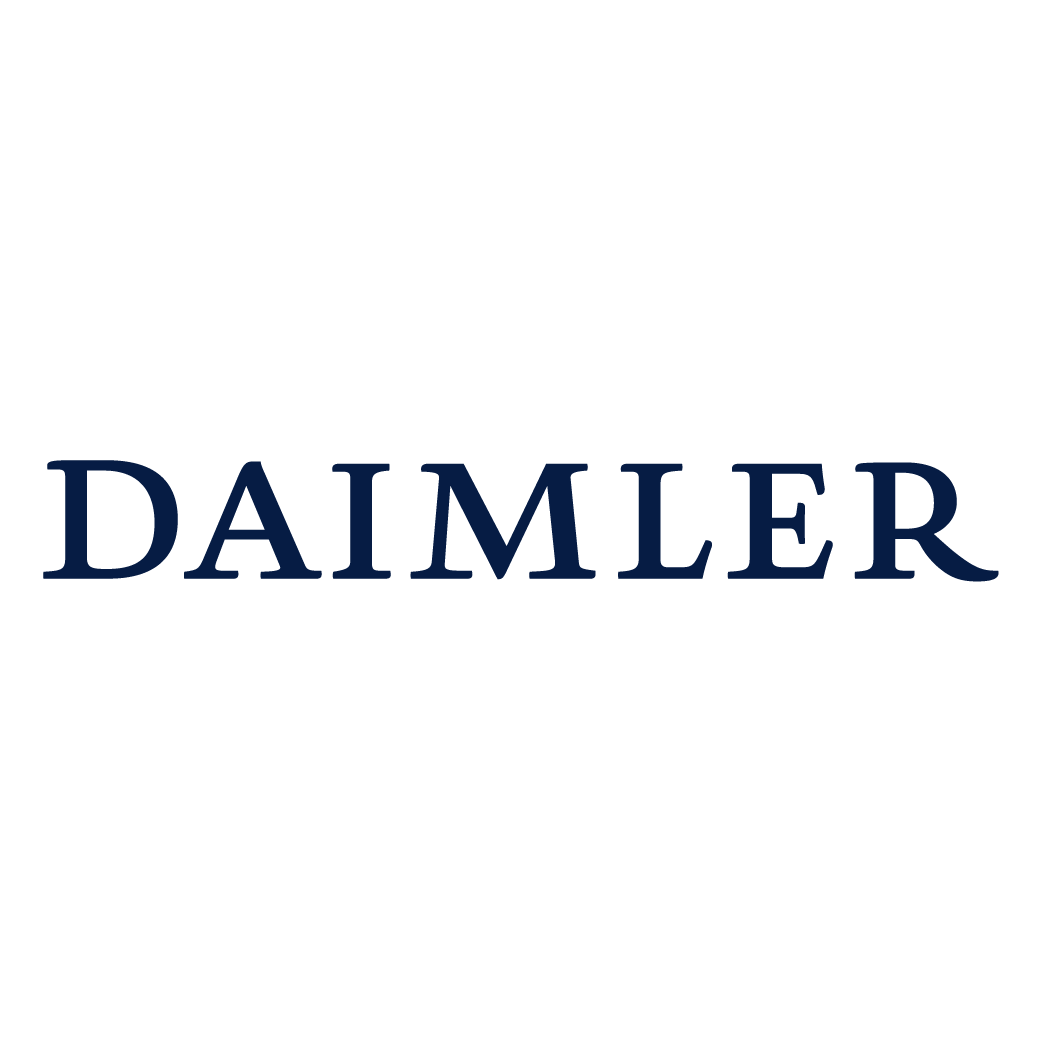Daimler Transforms Document Management with harmon.ie


Industry
Engineering & Manufacturing
Location
Germany
Company Size
300K employees
Organizational Background
Daimler AG is a multinational automotive corporation headquartered in Stuttgart, Germany. Founded as Benz & Company in 1883, the company became Daimler-Benz in 1926, shortening to Daimler AG in 2007. Daimler AG also includes Daimler Finance, which provides financing, leasing, insurance, fleet management, insurance services, banking and credit/debit card services in more than 40 countries, and Car2Go, a car-sharing service operating in many European and North American cities.
Daimler AG employs 280,000 people worldwide and sold 2.5 million vehicles in 2014, contributing to revenues of nearly €130 billion ($166 billion). Best known for its iconic Mercedes-Benz line, Daimler owns or has interests in several car, bus, truck and motorcycle brands, making it the second-largest truck and 13th-largest car manufacturer in the world.
The Strategic Collaboration Challenge
Daimler relies on seamless coordination of knowledge sharing across a global empire to maintain its position as a world-class vehicle manufacturer. From executives to administration, the organization is extremely dedicated to ensuring that meetings on strategy and operational tactics produce positive results. For that to happen, it is critical that all participants work from the same playbook – a huge challenge for a company whose meetings typically include executives scattered across the globe, relying heavily on their shared calendars and shared documents, which may continue to evolve up to hours or even minutes before the participants are linked together by video conference.
Aside from the fluidity of their documents, Daimler faced a two-part strategic collaboration challenge: on the one hand, executives needed to have fingertip access to the latest documents and presentation slides on their mobile devices during high-level meetings; on the other, managers and support staff responsible for organizing and feeding documents into the meetings needed a reliable, user-friendly tool to eliminate the scourge of “versionitis,” which so often overwhelms even the most efficient employees dealing with input from multiple sources.
Bad experiences with document versions declined as the company moved from early SharePoint versions to the latest version. “SharePoint 2013 is really a big improvement,” says Daniel Schulte, head of Daimler’s IT Senior Executive Service. Yet, the critical issue of user friendliness continued to inhibit efficiency, as the lack of integration between Outlook and SharePoint dictated that support staff were required to perform multiple steps to transfer documents from emails into the SharePoint server and executives were obliged to update their mobile devices by extracting documents from zip files or flash drives. A lot of users were still thinking in terms of hierarchies and folders, not metadata, and Daimler needed a way to encourage collaboration and fully leverage the power of SharePoint.
The Solution
Enter harmon.ie, whose simple, intuitive solutions make it easy for companies and their employees to store, classify, retrieve and update documents with SharePoint, Microsoft 365 and other Microsoft collaboration technologies.
“Initially, we were doing simple file-sharing via email, with the latest version of a PowerPoint presentation, for example, being placed in the file-share and synchronized with the executive’s mobile device through a USB drive or worse, emailed to him as a zip file,” notes Schulte. “He would then need to extract the document, which is obviously not very convenient.” Schulte explains that senior executives tend to be more traditional and conservative than the more tech-savvy managers and support staff. “They can’t afford to get bogged down in complicated steps to manipulate a document; they just need the workflow to be easy and efficient.”
Daimler operates a cloud-based SharePoint site for employees across the company, with senior executives also using an “on premise” deployment to grant them easy access to sensitive documents requiring extra security. “Thanks to the harmon.ie Mobile solution, Daimler executives equipped with the SharePoint app on their mobile devices can instantly retrieve and synchronize content from across the company to ensure that they have the latest ideas at their fingertips in important meetings.”
harmon.ie Email has also enhanced collaboration below Daimler’s executive floor by bridging the gap between Outlook and SharePoint. Despite the improved user-friendliness of SharePoint 2013 compared to earlier versions, resistance persisted among managers and support staff in regard to Outlook, which still required them to download documents from emails to the desktop and then place them into the SharePoint server. Now, following the achievement of Daimler’s initial objective of equipping mobile devices with SharePoint, the company has moved on to its second objective: encouraging support staff to deepen collaboration through SharePoint.
The harmon.ie Experience
“We thought it would make sense to bring it all together, so that not only the high-level executives would enjoy a seamless SharePoint experience, but also the assistant in the back office could, too,” remarks Schulte. Circulating documents among dozens of collaborators for viewing, commenting, modification and approval creates a tremendous flow of email traffic, and it’s very easy to lose track of the right version. But harmon.ie Email enables Daimler users to store email messages and attachments directly on SharePoint via a sidebar located within the Outlook window. It also automatically classifies emails by categories such as “to” and “from” and “subject” to SharePoint metadata for easy retrieval and collaboration.
harmon.ie has made it possible for Daimler to achieve its goal of deepening collaboration through SharePoint and ensuring that executives and support staff alike share a single copy of the truth at all times. But the key, for Schulte, is user-friendliness. “harmon.ie made it easy enough for people to get access to documents. I think we’re most successful when users are able to collaborate smoothly and without even realizing that they’re using SharePoint,” he says.
The Future
Daimler is continuing to roll out harmon.ie, as early success has encouraged the company to extend the project to other functional areas. “I am occupied with the implementation and monitoring of the project with senior and lower-level management, but we are already running pilots with the global initiative program, which also uses the same tools,” says Schulte.
Going forward, Schulte envisions a future of more collaboration and better document management. Without a doubt, he’s pleased that harmon.ie has gone a long way to help cure Daimler of the most common ailment of data-driven companies: versionitis. He is also pleasantly surprised at the relative lack of noise from users within the company following such a major implementation. He concludes, “If I don’t get much feedback, that means that the users are not having problems.”
Bring Everything Together in SharePoint, Microsoft Teams, and OneDrive
Unify your content – emails, documents, and conversations – drag and drop Outlook emails and attachments into SharePoint, Teams, and OneDrive.
